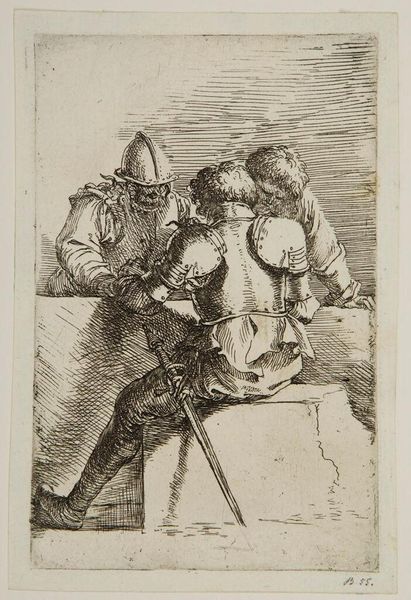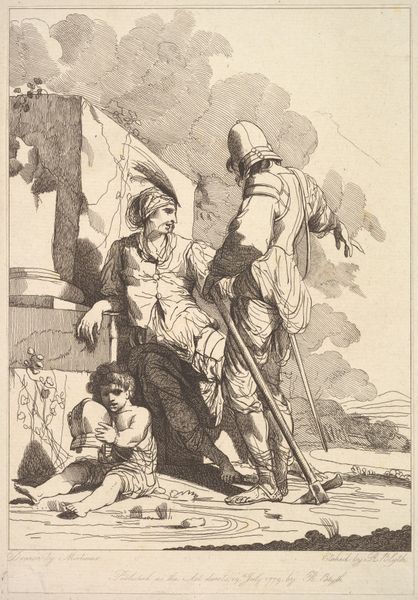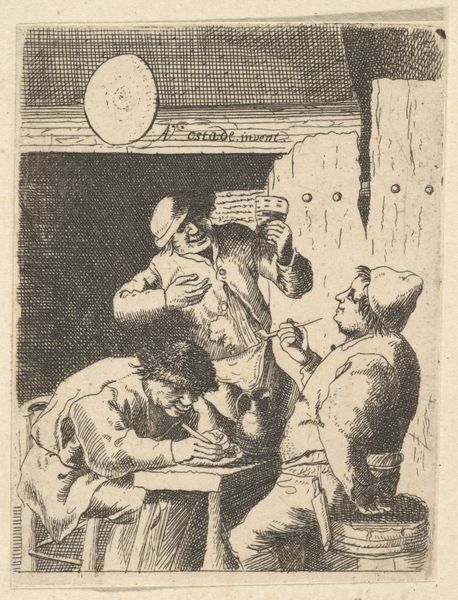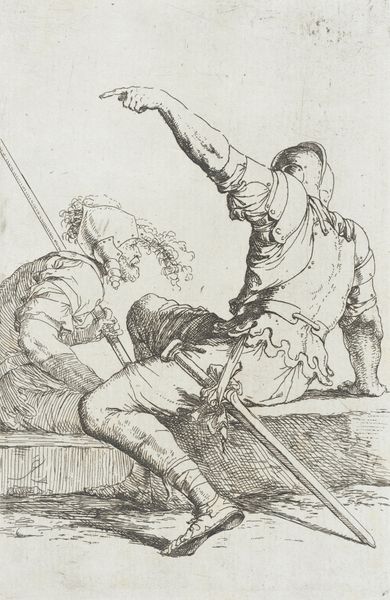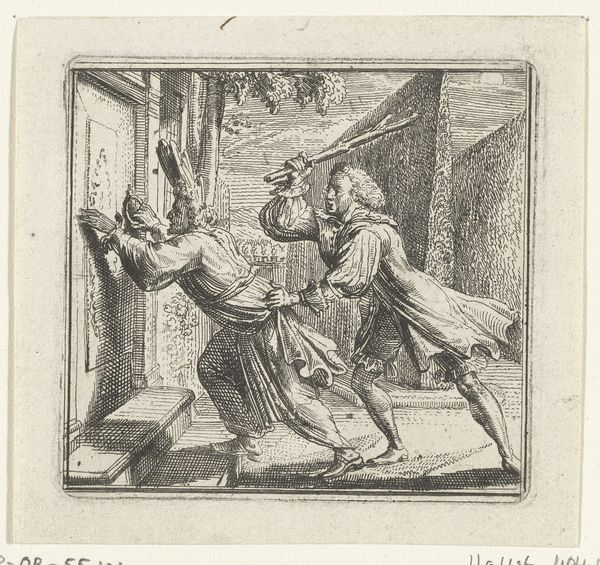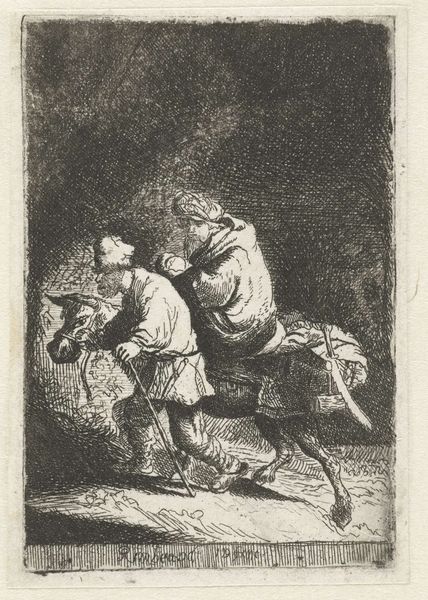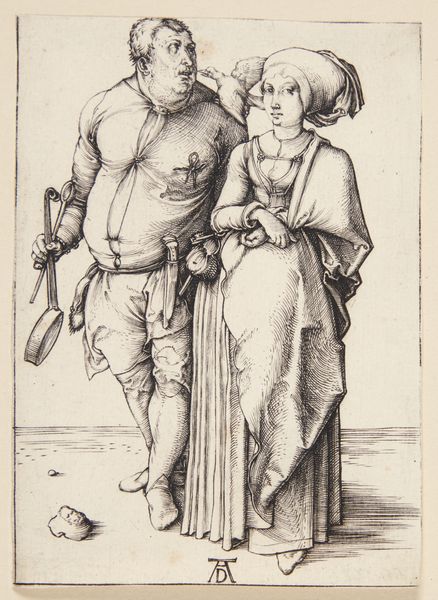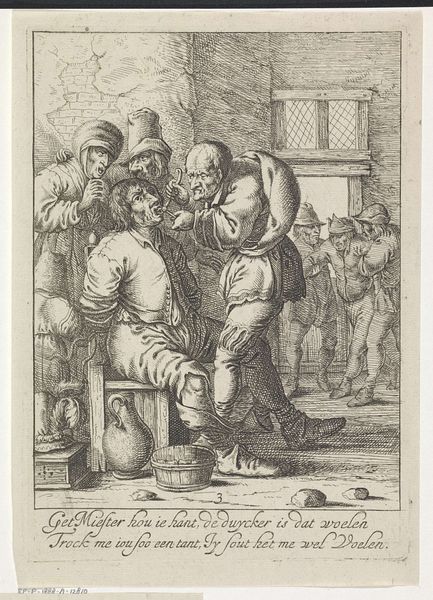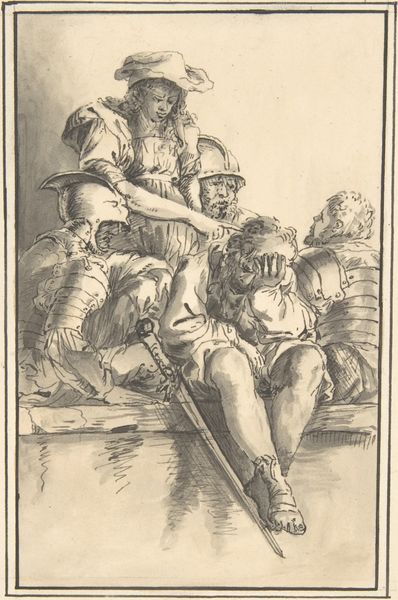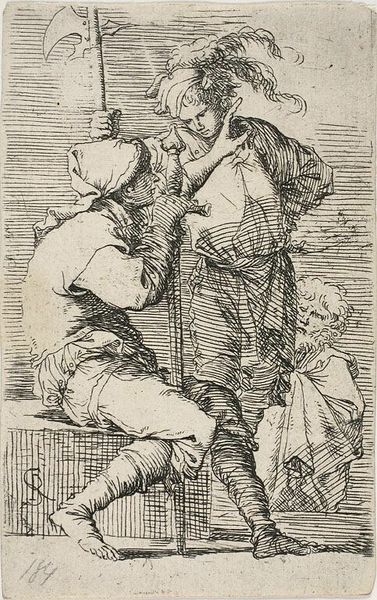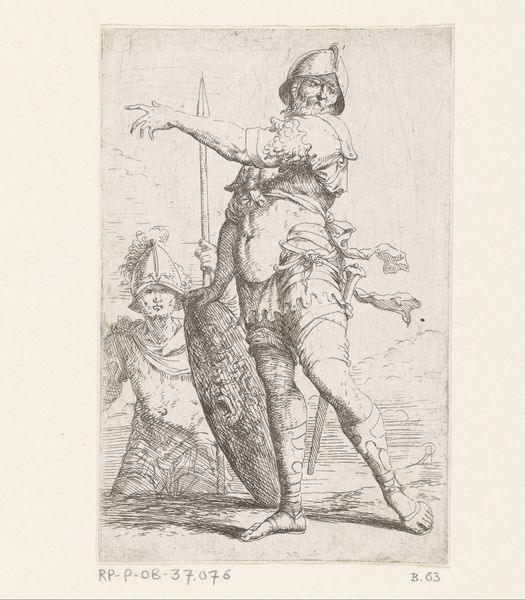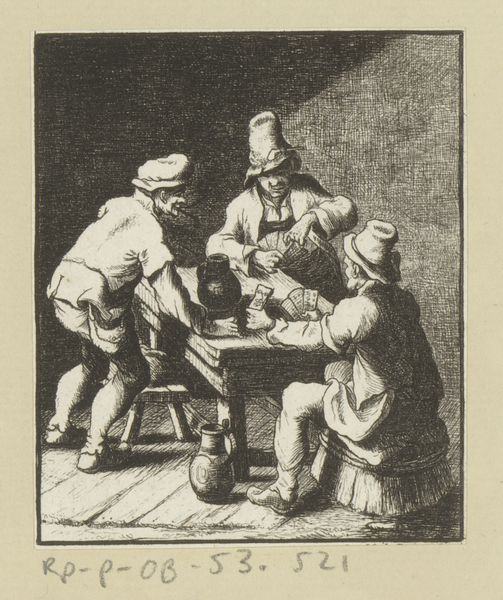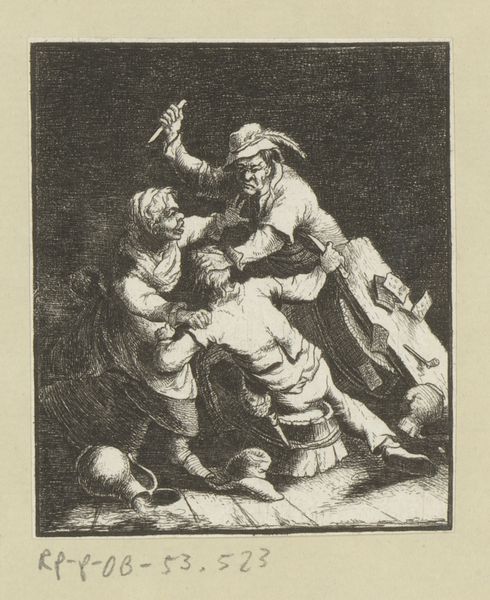
Three warriors conversing at a low wall, one with his back turned, from the series 'Figurine' 1651 - 1661
0:00
0:00
drawing, print, etching
#
drawing
#
narrative-art
#
baroque
# print
#
etching
#
figuration
#
history-painting
Dimensions: Sheet: 7 x 4 15/16 in. (17.8 x 12.5 cm) Plate: 5 11/16 x 3 9/16 in. (14.4 x 9.1 cm)
Copyright: Public Domain
Curator: Welcome. Today we're looking at Salvator Rosa's etching, "Three warriors conversing at a low wall, one with his back turned, from the series 'Figurine'," dating from about 1651 to 1661. It is part of the collection at the Metropolitan Museum of Art. Editor: There's an immediate intimacy to this scene. Despite their armor and weapons, the sketchy quality evokes a feeling of candid observation. The dense, cross-hatched shading creates such a dramatic effect; everything seems so dark yet vulnerable. Curator: The ‘Figurine’ series explores types rather than individuals, presenting archetypal figures. Warriors, philosophers, bandits. They embody distinct aspects of human experience. The posture of the figure turning away is particularly powerful. Rosa is not showing us a triumphant hero, but a man, caught in the complexities of decision and reflection. The turned back also hints at secrets and veiled allegiances. Editor: Rosa's use of line here is so interesting. The etching medium lends itself well to conveying texture—the cold, hard armor, the rough stone of the wall. Observe how light is used not realistically but emotionally, dramatically. This highlights areas while concealing others, which definitely contributes to the overall tone. Curator: The narrative art here goes beyond simple history painting. Rosa utilizes symbolic figuration, drawing upon long-standing cultural associations of the warrior figure with strength, loyalty, but also with conflict, and often, tragedy. These aren't just figures in armor, they are symbols burdened with the weight of historical narratives. Editor: True. The arrangement is interesting, too. They’re grouped together tightly, as if conspiring, the figure in the center as the main anchor, both visually and perhaps even narratively. In regards to the composition I like the contrast of hard lines to the soft. Curator: I agree, Rosa seems less interested in objective rendering and more interested in imbuing his figures with symbolic resonance and revealing inner turmoil. These figures almost function like a kind of melancholic memory. Editor: I find myself drawn in by this seemingly simple etching technique. What began as mere line, transforms into something profound, that reflects the cultural symbolism and history in Baroque art. Curator: Ultimately, Rosa offers a fascinating interplay between the personal and the historical, reminding us how individual lives become intertwined with the sweeping currents of history and human conflict.
Comments
No comments
Be the first to comment and join the conversation on the ultimate creative platform.
